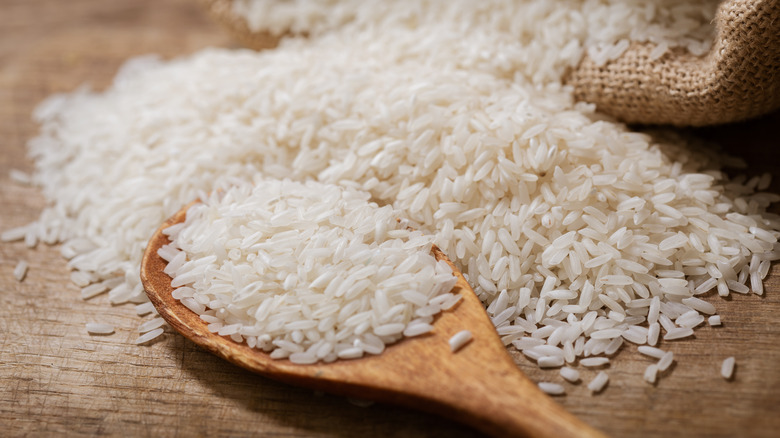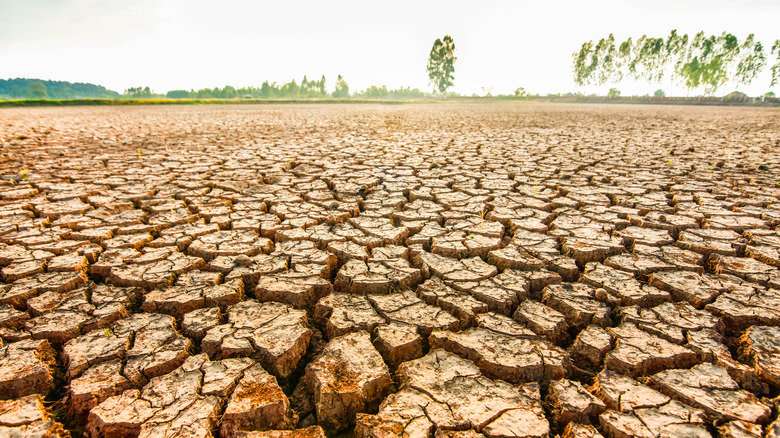Why White Rice May Soon Become More Expensive
If trips to the grocery store have become more stressful for you over the past few months, you're not alone. In a survey conducted by The Harris Poll, in March and May 2022, 90% of Americans said they were concerned about staying within their budget when buying groceries. This comes amid the highest inflation in about 40 years which has been pushing up food prices across the board (via CNBC). The prices of staple foods such as eggs, flour, chicken, and milk have soared, according to CNN Business, and another staple many of us rely on in the kitchen might soon skyrocket in price, too: white rice.
International rice prices reached a 12-month high after five months of consistent price increases, according to a CNBC article published in June 2022. The problem compounded in August, when India — whose exports account for 40% of the global rice trade — received record-low rainfall, causing a drop in production and a further increase in price (per The Washington Post). And, the effects of that reduced production — and, subsequently, the exports — are still ricocheting through India's rice market.
Export taxes on Indian white rice are driving up its price
Record-low rainfalls in India's 2022 rainy season have caused an upheaval in the leading rice supplier's global market, according to Reuters. Late last week, in an attempt to rebuild its rice stockpiles and normalize prices of the grain in light of reduced planting and reduced exports, New Delhi, the country's capital, imposed harsh new export levies which disproportionately affect white rice. The 20% tax is driving up the cost of Indian white rice as compared to grain sourced from rival countries including Thailand, Vietnam, and Pakistan.
Because the price of Indian white rice has shot up so much as a result of inflation and drought, it's likely that importing countries such as China and Iran (via WorldAtlas) will purchase their grain from those other big exporters. "The duty has made Indian rice expensive," B.V. Krishna Rao, president of The Rice Exporters Association, told Reuters. "Exports would drop by at least 5 million tonnes." So, it seems whatever quantity of Indian white rice does make it to supermarket shelves will be even pricier due to scarcity. And, it's also going to be way likelier that the rice you do find will be an export from Thailand, Vietnam, or Pakistan, at least until the September 2023 harvest.

